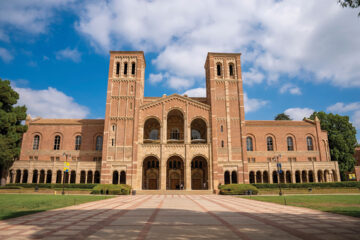San Elijo Lagoon Restoration
Community and environmental organizations with a vested interest in the all-encompassing restoration of San Elijo Lagoon are receiving presentations by conservancy directors. These focused meetings are underway in advance of the release of the environmental documents for San Elijo Lagoon Restoration —anticipated this summer.
Community and environmental organizations with a vested interest in the all-encompassing restoration of San Elijo Lagoon are receiving presentations by conservancy directors. These focused meetings are underway in advance of the release of the environmental documents for San Elijo Lagoon Restoration —anticipated this summer.
Ninety percent of California’s coastal wetlands have been replaced by urban development and agriculture. San Elijo Lagoon is a valuable part of what remains, but we are losing mudflat and salt marsh habitat. San Elijo Lagoon’s mudflat ecosystem will vanish unless we act. After 17 years of research and planning, it is time for the large-scale restoration of San Elijo Lagoon.
San Elijo Lagoon Restoration will restore disappearing salt marsh and mudflat habitats while improving tidal circulation in the reserve and coastal water quality. The restoration team is preparing for the release of the environmental documents that will outline the different restoration alternatives. Community input is an essential part of this process.
“We encourage an open and transparent dialogue with neighbors, citizens, and environmental groups who are interested in learning more about what it means to restore this wetland,” says Doug Gibson, executive director and principal scientist for San Elijo Lagoon Conservancy.
One of few remaining wetlands in California, San Elijo Lagoon is known as a hot spot for biodiversity. Like vanishing rain forests and coral reefs, wetlands are one of the most productive habitats in the world. The 979-acre reserve hosts more than 700 species of plants and animals, many rare and endangered. Although birds are the lagoon’s most photographed species, mammals, fish, reptiles, amphibians, and invertebrates depend on the lagoon, as do rare coastal dune and coastal sage scrub plants; even diverse life forms from mushrooms to algae.
Seven miles of trails for running, hiking and dog walking, world-renowned bird watching, and wildlife photography offer visitors a natural environment for solace and inspiration.
What appears healthy from the outside requires a deeper look within. San Elijo Lagoon is losing its mudflat and salt marsh habitats as a result of urban pressures. Highways, a railroad, and nearby infrastructure all contribute to restricted tidal flushing and degraded water quality in the reserve. As population expands in Southern California, the health of the wetland will continue to be degraded by both historical and future development.
Mudflats are the primary source of food for many reserve animals, especially waterfowl that spend the winter here and other birds that use the reserve as a resting/refueling area during fall and spring migrations. At present, there are only 30 acres of mudflats, which is 24% of the historical 125 acres. It is estimated that without restoration all mudflats will be functionally gone in 5 years.
CEQA, the California Environmental Quality Act, and NEPA, the National Environmental Protection Act, are state and federal regulations that help ensure that large projects have negligible environmental damage, or that that damage is mitigated. Although CEQA and NEPA are separate acts, their requirements are similar and the two processes often proceed together. The final environmental document will meet the requirements of both CEQA and NEPA.
Several public meetings will be held during the CEQA/NEPA process — anticipated in summer — to encourage members of the public to share thoughts and concerns about the project. The final restoration decision is a collective one involving San Elijo Lagoon Conservancy, the lead agencies San Diego County of Parks and Recreation and U.S. Army Corps of Engineers, and 11 stakeholder groups (listed online at www.sanelijo.org/stakeholders). 760.436.3944, ext. 704, www.sanelijo.org/restoration





Comments